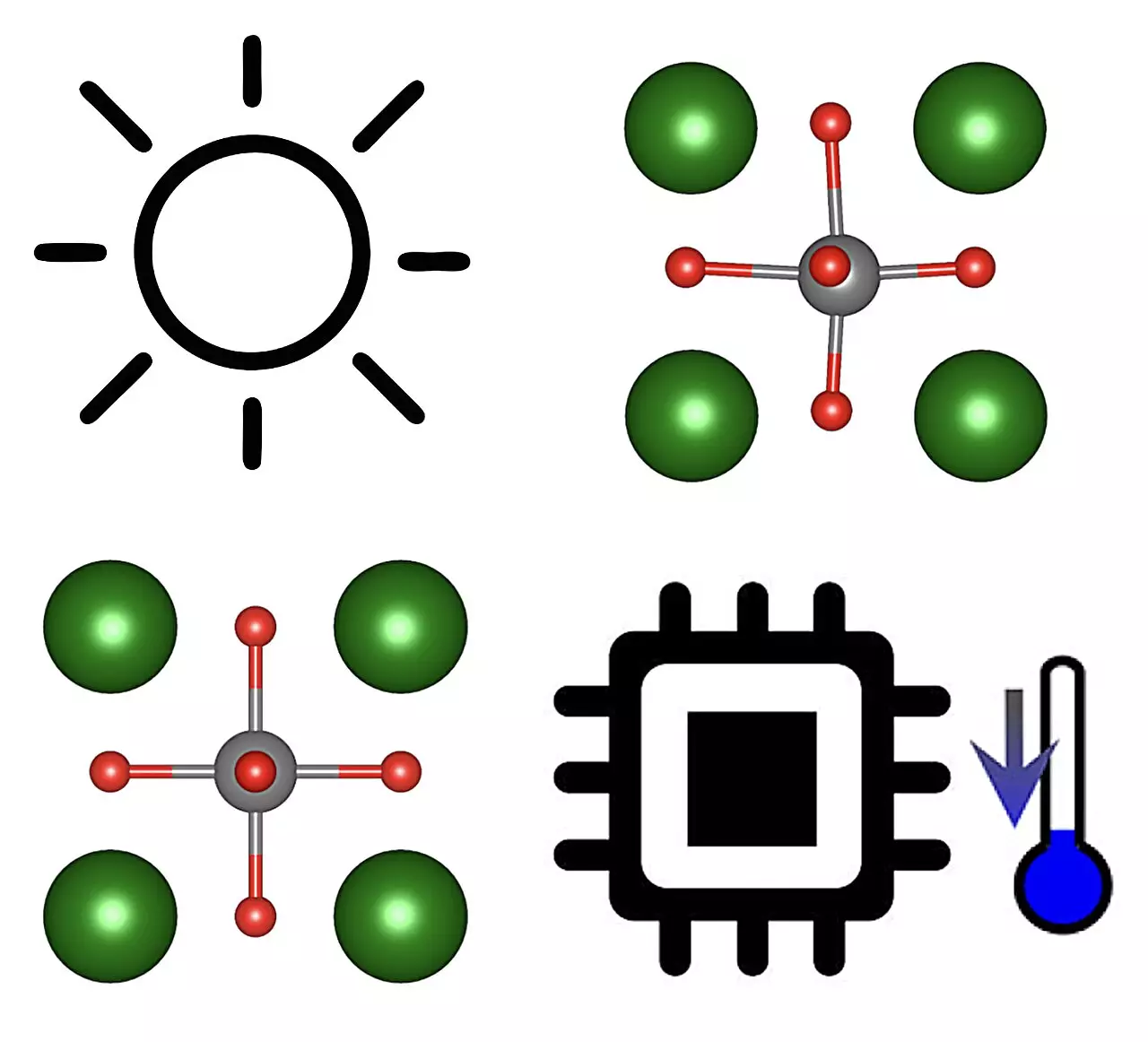The quest for innovative cooling solutions has led researchers to explore alternatives to traditional refrigeration methods that rely heavily on gases or liquids. Solid-state cooling emerges as a revolutionary technique, relying on the intrinsic properties of solid materials rather than conventional working fluids. This approach holds the promise of energy efficiency and a significant reduction in greenhouse gas emissions, which are critical in an era of escalating environmental concerns. However, the implementation of solid-state cooling systems has often been hampered by the limitations of conventional caloric effects, which only operate effectively within a narrow range of temperatures, thereby constraining their practical applications.
Recognizing these challenges, recent research by a team from the Institut de Ciència de Materials de Barcelona and the Universitat Politècnica de Catalunya aims to address these obstacles by investigating the potential of ferroelectric perovskites to produce photocaloric (PC) effects. Their ground-breaking findings, published in *Physical Review Letters*, suggest that these materials can generate significant cooling effects across a much wider temperature spectrum than traditional caloric systems.
Photocaloric effects refer to the phenomenon whereby materials undergo a change in temperature when exposed to light, which can induce phase transitions in specific materials. Researchers Claudio Cazorla and Riccardo Rurali delve into this mechanism, identifying that certain ferroelectric materials can transition from a ferroelectric state, characterized by spontaneous electric polarization, to a paraelectric state when illuminated. This phase transition is crucial, as it alters the entropy of the material, thereby providing a means for both refrigeration and heat pumping without the need for conventional refrigerants.
The potential of these ferroelectric materials, particularly BaTiO3 and KNbO3, is remarkable. Unlike traditional caloric effects, which are typically confined to temperature changes of around 10K, the PC effects observed in these materials can persist over a much broader range, theoretically allowing for cooling operations over approximately 100K. This wide operational range is a game changer, indicating that solid-state cooling could effectively cater to diverse applications, from everyday refrigeration to advanced technological systems.
One of the most significant advantages of employing PC effects is the simplicity of the resultant cooling systems. Because the triggering mechanism is light absorption, there is no requirement for complex electrode placements on the ferroelectric materials. This aspect not only streamlines the manufacturing process but also paves the way for miniaturization. Conventional refrigeration systems are often bulky and complicated, but the advent of integrated light sources such as lasers offers new opportunities for compact designs applicable in tight spaces like microprocessors and circuit boards.
Moreover, this cutting-edge technology could revolutionize cryogenic cooling. The theoretical persistence of PC effects across extensive temperature ranges—from room temperature down to absolute zero—positions these materials as promising candidates for applications in quantum technologies, where ultralow temperatures are often a necessity.
The implications of Cazorla and Rurali’s research are profound, promising not only new avenues in solid-state cooling but also potentially igniting further studies that will delve into materials beyond ferroelectrics. The spectrum of research may soon extend to two-dimensional materials and thin films, which could enhance the efficiency and applicability of PC effects in mundane and cutting-edge technology pursuits.
Investigations around the interactions of charge density waves and how they can be leveraged to enhance cooling systems are also on the horizon. The notion of utilizing light-induced phase transitions to refine refrigeration could inspire a new generation of temperature management technologies, potentially transforming industries reliant on precise thermal controls.
As the world grapples with climate change and energy resource demands, innovative solutions like photocaloric effects in solid-state cooling systems emerge as critical alternatives to conventional refrigeration methods. The research coming from Barcelona signifies a monumental step towards energy-efficient, environmentally friendly refrigeration technologies. Indeed, as Cazorla and his team pursue further studies, the promise of photocaloric-based cooling systems could lead to widespread applications, fundamentally altering how we approach temperature management across various sectors. This exciting new research landscape invites collaboration and exploration, setting the stage for a transformative era in cooling technology.


Leave a Reply